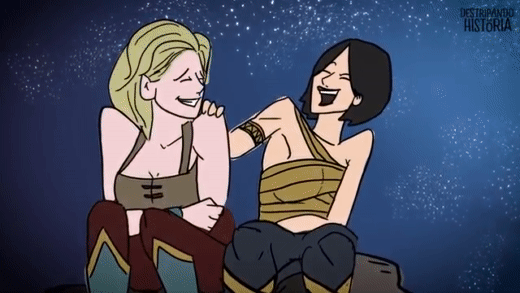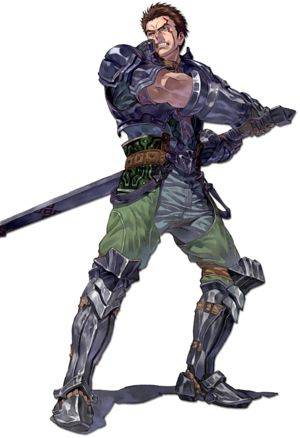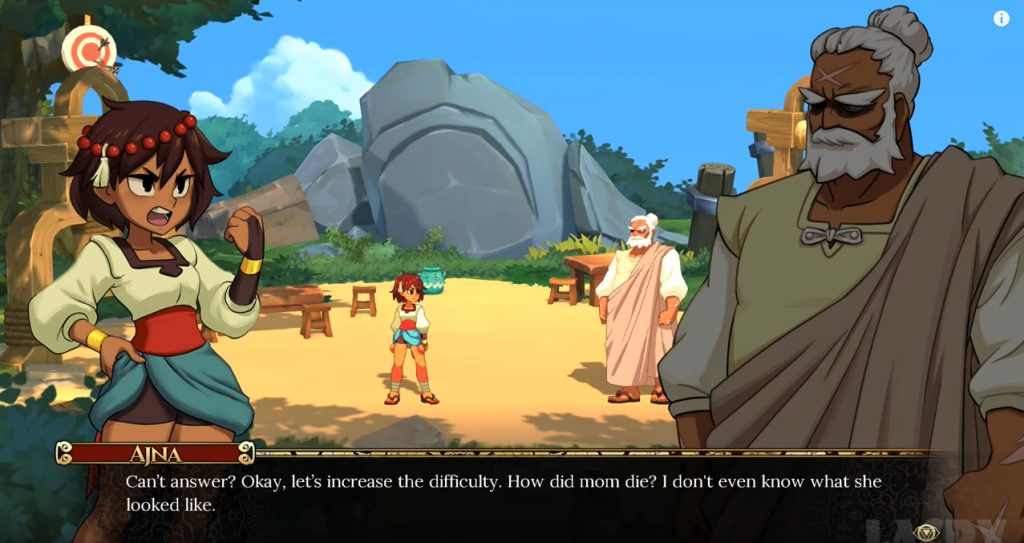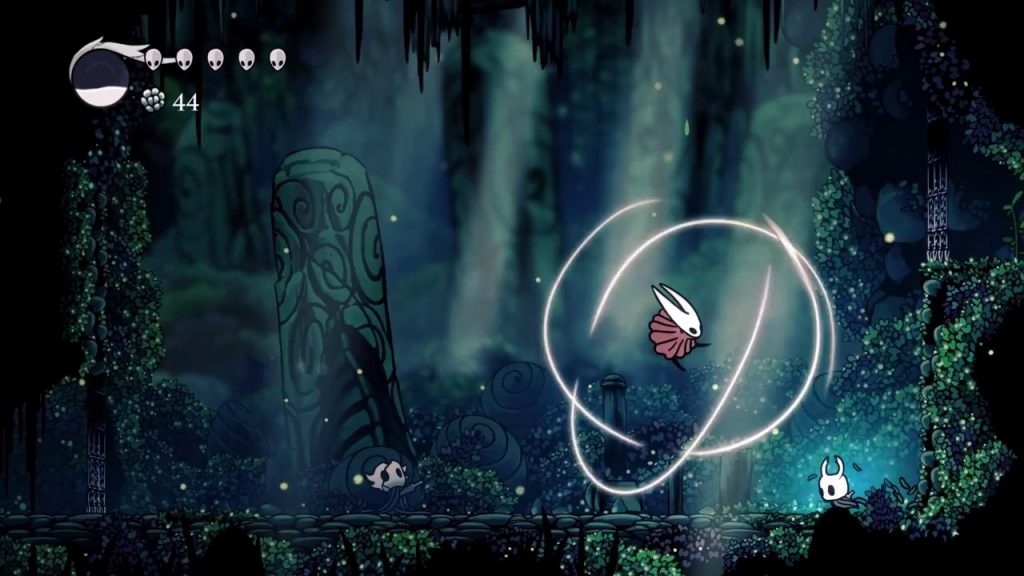In the previous essay, I explained that games can be classified into 9 Aesthetics proposed by Marc LeBlanc, Robin Hunicke and Robert Zubek in their 2004 paper: The MDA Framework. But to keep things tight and orderly, I didn’t elaborate on how to build an Aesthetic for a game.
In this essay I’ll focus on that part with the help of two concepts, Mechanical Modulation introduced in 2003 by Staffan Björk in its Game Design Patterns. The other concept is one I’ve been working on since we published the Integrated Framework for Game Design in 2019, and it’s the idea that every mechanic has a certain inherent texture that adds to a specific Aesthetic. I call this property Mechanical Alignment and it’s the idea that every mechanic is aligned to an Aesthetic to some degree.
Alignment and Modulation
Imagine we are building a First Person Shooter. Consider the Aim & Shoot mechanic that uses the movement of the mouse to aim, and the left click to shoot. This mechanic depends entirely on Fine Motor Skills, the ability to move the mouse quickly and precisely before hitting the fire button defines how good you are at this particular mechanic. This mechanic is aligned with the Challenge Aesthetic, the sole insertion of this mechanic introduces into the game an element of physicality. The amount of time you are using this mechanic defines how much the Challenge Aesthetic is present in the game, so if 80% of the time you have to Aim & Shoot at stuff, this is probably a Challenge-First game.
Let’s propose a slight variation, an Ammunition mechanic that makes each time you shoot, a number goes down, if this number reaches 0, you can no longer shoot. This modifies the way you use the Aim & Shoot mechanic because now you have to think about managing a resource, now there is a tactical element that pushes the whole system ever so slightly towards the Puzzle Aesthetic.
The new system feels different, now every time you shoot, you are not only thinking about the moment-to-moment “get the target and shoot” experience, but somewhere in the process you are also thinking “I have so many bullets and I need to be efficient”. In this case, Ammunition is modulating Aim & Shoot, and by doing so it’s changing not only the way you as a player use the Aim & Shoot mechanic but also the way you perceive the whole game, your emotional experience changes, thus the overall Aesthetic of the game.
In simple terms:
- Alignment is the inherent property of a mechanic that makes it provide a specific Aesthetic to the game.
- Modulation is the dynamic that comes when one mechanic modifies the way another mechanic feels and works.
Detect the Alignment of a mechanic
For most cases, understanding the Alignment of a particular mechanic should be fairly intuitive, given you already mastered each Aesthetic. This is the part where experience kicks in, if you take your time and analyze enough games of each Aesthetic, you’ll start seeing some patterns. My approach is to understand the game as a learning experience and try to visualize which skills is the game teaching me with each mechanic. I also try to look for a homologous mechanic in another game and see how well they fit.
Let’s try to work a few examples:
- Dancing in DDR: It’s all about timing, the game wants me to learn to feel the rhythm and time my movements to the prompt on screen. Prompts are represented by big bright colorful arrows that match the ones under your feet. Time is represented by the position and movement of the arrows on the screen. Success is marked by strong visual and sound effects. This is a Sensation mechanic. Every variation of this mechanic (moving in Crypt of the Necrodancer, dancing in Just Dance, hitting blocks in Beat Saber, playing guitar in Guitar Hero) is working on the same skill: feeling the rhythm.
- Hearts in The Legend of Zelda: It’s dangerous to go alone!… For real, that’s the idea, that you as a player understand the world is dangerous and this string of hearts that deplete when something bad happens to you is the perfect metaphor for it. The heart is usually associated with two ideas: love and health. If you see a string of hearts it can only mean two things: either you are very in love, or each of those hearts represents the health of your blood-pumping muscle (well, Link’s actually). The dangerous outside world is an enticing idea, you try to avoid danger in your real life, but in the videogame, there’s such an appealing element to it, to go deep into dangerous adventures. Add to it the fact that you can get more hearts and become stronger. This is a Fantasy mechanic. Every mechanic that acts as a metaphor for some aspect of the body and mind of your avatar (Points of Experience, Ability Points, Skill Trees) in the fictional world is trying to convey a similar idea: the world is dangerous and you need to become stronger to survive in it.
- Decisions in The Walking Dead: Kenny will remember that! The words you choose matter, and the people around you have the ability to reflect on them. Not only that, sometime in the future things you said or did might come back and you’ll have to face the consequences of your actions. That is what the game is trying to teach me: think before you speak, think before you act, what do you want your story to be? (This is especially funny because of how painfully linear TWD games are). This is a Narrative mechanic. I think there’s not really much difference between branching dialog systems, Fallout, Mass Effect, TWD, Life is Strange… all the same IMHO. The only example I can think of as I write this section is the decision-making in Papers Please, because at surface level you have always the same two choices, but the game manages to bring back your decisions to haunt you. Maybe the decisions in Bioshock 2? To kill or not to kill…
- Parry in Dark Souls: It’s all in the wrist. Learn the patterns and hit the button at precisely the exact moment. Learn how to move fast, react, work on your reflexes, on your muscle memory. This mechanic is all about Fine Motor Skills, it’s like catching a baseball in the air, the only way you can achieve perfection is through practice. And it will hurt, but no pain no gain (this metaphor is getting out of control). This is a Challenge mechanic. Challenge mechanics always play with precise timing, fast reflexes, and complicated combinations of inputs at specific moments. These mechanics try to teach you through repetition. Think of the Fatalities in MK and you’ll get the idea (what is “jumping distance” anyway?).
- Portals in Portal: Deceptively simple, just put a blue portal in point A and an orange portal in point B, then get to point B and finish the level. But a few tweaks and this mechanic has endless applications in tons of different scenarios. It’s a simple tool with a lot of uses, but in all cases, you have to first take a breath, study the layout of the level and plan your actions. This is a Puzzle mechanic. Puzzle games are all about the order of operations. Learn the steps and execute them in the correct order. Find the pattern and apply what you’ve learned, maybe try a new way to use a familiar tool. Oh, and many, probably a majority of Puzzle games are actually about programming, which in itself is like the ultimate Puzzle game.
- Voting in Among Us: “-Green: White WTF! -White: What? I was fixing O2! -Green: You were near the body, we all saw you!” The voting system of Among Us allows the players to chat and vote in a limited amount of time. Whoever gets the most votes gets thrown into outer space. It’s all about trust and imperfect information, if you were chilling with Green in the cafeteria, then Green is not the impostor, right? It can’t be but, what about the other players, the ones you did not see? As you discuss, the chat shows you in real-time who has voted, which pressures other players to vote, and through pure social engineering, you can influence others by timing your vote after someone is accused. This is a Fellowship Mechanic. Look for mechanics that allow you to act with or over other players. Mechanics that only work if there is another player. It can be a cooperative mechanic like a trading system or an antagonistic mechanic like killing a crew mate in Among Us.
- Tallnecks in Horizon Zero Dawn: You just got out of the tribe, and you have one instruction: travel west, to Meridian, there you might find clues to the answers you seek. The world opens before your eyes, it’s kind of overwhelming. As you travel the path, something picks your attention. Something white and tall breaks the horizon, is it moving? You leave the path, only for a moment, to investigate. As you approach you can hear the sound of its steps, IT IS MOVING! it’s a Tallneck, the biggest dinosaur-robot in the game. Now you have to get near, can you climb it? As you get near it you notice there are small structures near its path, maybe if you climb one of them you can get a closer look. Tallnecks are Horizon’s implementation of the Radio Tower pattern in open-world games. It’s a tall structure that breaks the landscape and calls the player to it, like a beacon. From there the player can get a clearer view of the map and new side-missions reveal. This is a Discovery mechanic. Discovery is about uncharted territory, about owning the terrain. Discovery mechanics work by guiding the player to new places, pushing them into the unknown, but only a little bit. Expand your frontiers one inch at a time.
- Building in The Sims: What happens if I remove the ladder of the pool while they’re inside? OH! THAT HAPPENS!! Is this color best for my living room? does it match the furniture? I’m going for a 50’s Americana style for this house. If you have ever played The Sims, you’ve probably lost more hours than you care to admit picking paint color for your virtual house walls or choosing the right coffee table to complement the living room. This game is not rushing you, on the contrary, the game allows you to set the pace, to pause at any moment, to be free. As the game progresses, you have access to more content, and a cycle reveals itself: get in-game money to improve your in-game house, and then use that house to improve your in-game family that goes get more in-game money. This is an Expression mechanic. Expression Mechanics are easy to detect, usually, they allow you to modify the environment in extreme ways. God games and Tycoon games are good sources of inspiration on how to approach this Aesthetic. Character creator systems, common in Fantasy games, are actually Expression mechanics.
- Click in My Name is Mayo: Just… keep clicking the Mayo jar. Not much to learn here. OH look, something happened! Click on it and… well just keep clicking. It’s kind of therapeutic, isn’t it? The game is not really trying to teach you something new, just relax and keep clicking, enjoy the music. This is a Submission mechanic. Submission games don’t teach you anything. With intuitive gameplay, the whole idea of the submission game is that it’s devoid of challenge, devoid of struggle, and only a hint of difficulty is perceived, but it’s not something you must overcome, it’s more like a minor inconvenience, enough to keep you engaged but not that much that you could even think of rage-quitting the game. A masterful Submission game is in itself a thesis on UI design.
How to adjust the Alignment of a mechanic
Let’s make a mental exercise. Suppose we are building a combat system for two different games. Game A is Sensation-First, with lots of fast-paced action. Remember that Sensation games are nondemanding, forgiving of errors, and focus on fast and sustained high-energy sections. Game B is leaning more towards a Puzzle Aesthetic, we want to focus more on strategy and tactics. In Puzzle games, the player controls the pacing, not the game, and the system should press the player to think before they act, to plan ahead their actions, and execute them carefully.
The combat system for both games will have the same mechanics:
- Locomotion (Discovery): The player will move forward with the key W and backward with the key S. The player will strafe left with A and right with D. The player will use the movement of the mouse to rotate the camera, and forward will always be towards the front of the camera.
- Aim & Shoot (Challenge): The game will have a visible reticule in the center of the screen. To aim the player has to align the view with the target using the movement of the mouse. The Left Mouse Button will be used to shoot.
- Health and Damage (Fantasy): The player will have a numerical representation of their health. Enemies can attack the player, reducing the value of health. Health is linked to a defeat condition, if the value of Health drops to 0 the game triggers a Game Over condition.
- Ammunition (Puzzle): Each gun will have an ammunition counter. Each time the player fires a gun, its ammo counter will go down. If the ammo counter reaches 0 the gun becomes unusable. The player can find more ammo in the form of pickable objects called ammo boxes.
By adding this system we are also introducing a lot of complexity into the game’s Aesthetic composition. As we can see, each mechanic adds some texture into the game that changes the overall experience. However, this is not proportional, the fact that the system has 1D+1C+1F+1P doesn’t mean that this system is one part Discovery, one part Challenge, one part Fantasy, and one part Puzzle, each mechanic can be designed in a way that supports the main Aesthetic. The original alignment of each mechanic will still be present in the final product, but it can be adjusted, tuned down, and modulated to fit better with the target Aesthetic.
For Game A we want the combat system to support the Sensation Aesthetic, so we want a combat system that is forgiving, fast, heavy on visual effects. For Game B we want a combat system that is player-paced, requires strategic and tactical planning, and careful execution.
| Game A (Sensation) | Game B (Puzzle) | |
|---|---|---|
| Locomotion | Fast: The player character will have only one speed, somewhere between 15 and 20 meters per second. Turning will also be very fast, around a full turn per second, allowing the player to change direction quickly while running. Forgiving: The character will align automatically when they hit a wall in a slanted angle, this way the speed is maintained and the player can focus on moving from point A to point B without thinking much about adjusting their movement. Especially useful for narrow corridors. | Self-Paced: The player character will have two speeds, one walking at ~3m/s and while holding a modifier button the player will start running at 6m/s. Careful: If the player hits a wall, their speed will be hindered by the natural friction of the physics system. The rotation speed will be slow too, around 90 degrees per second. The player cannot run backward, only walk. Requires Planning: Corridors and rooms will be littered with obstacles, demanding the player to maintain a mental map and plan their movement through each room. |
| Aim & Shoot | Fast: Always on. The reticule is always visible and the gun is always loaded and ready to fire. Enemies move fast through the field, requiring the player to chase them and close distance to get a better shot. Forgiving: Bullets will have a wide area of effect, allowing the player to aim somewhat carelessly and still get a target. | Self-Paced: The player needs to hold a modifier button to pull up the gun and aim. Enemies move slowly and circle the player before attacking. This gives the player some time to get the target on sight. Careful: The gun will add a margin of error while the player is moving, increasing the probability of a missed shot unless the player stops for a moment before pulling the trigger. |
| Health and Damage | Fast: If an enemy hits the player, the hit is resolved instantly. VFX and SFX will be used to signal the player of the damage taken, but movement is not hindered. Strong attacks will produce a small knockback. Forgiving: Each attack will reduce somewhere between 1 and 5 hitpoints, with very strong enemies hitting up to 10 hitpoints at a time. | Careful: If an enemy hits the player, a scripted animation will trigger, taking control from the player for a brief period of time. Changes in camera angle and the position of the character will force the player to regain their bearings after an attack. Planning: The player can sustain only four attacks in a row. Forcing them to evade damage as much as possible and play defensively, using the convoluted space around as an advantage. |
| Ammunition | Forgiving: Ammo can be dropped by enemies on death. The chance of ammo drops increases when all the guns have low ammo. Since the chance of ammo drops depends on a random event, there’s a gun with infinite ammo, although lower power, this will allow the player to keep pushing forward and target weaker enemies to try and get an ammo drop. | Careful: Ammo is limited in the whole game. Each time the player fires a gun, that is a bullet less in the overall count of ammo available in the whole game. Planning: The player cannot carry much ammo, they will have to choose which type of rounds to take in between sections of the game. Certain enemies are more resistant to certain types of ammo. |
Of course, we are talking about DOOM (2016) and Resident Evil 2 Remake (2019). In both games we have a combat system that can be described as “similar”, but each implementation has different considerations that clearly separate both games to a point that almost no one would consider both games to play the same.
In this oversimplification of the combat system of both games, I’m leaving out some dynamics that are very important for the overall experience. In DOOM the Glory Kill mechanic is purely Sensation and its insertion into the combat system has a huge impact on the way the game feels: A nearby enemy is glowing bright orange (non-verbal information), the player hits one button and automatically the Doomslayer jumps into the target at breakneck speed (non-demanding, fast), an animation triggers and the player witnesses how the Doomslayer destroys the enemy with his bare hands, blood and guts splat everywhere (heavy use of VFX and SFX), and bright orbs of health and ammo spawn from the carcass (forgiving). This mechanic tips the balance of the whole combat system heavily towards the Sensation Aesthetic. Add to this the heavy use of motion blur, simple and colorful UI, and scenarios with bright lights and lots of contrast.
While DOOM is a very simple game by design (Badass guy kills demons with things that go BOOM), RE2 is a much more complex experience. In the previous essay, I classified RE2 as Narrative for its heavy use of dialog, environmental, and epistolar narrative. However, the Discovery elements of RE2 are very strong and the balance …














